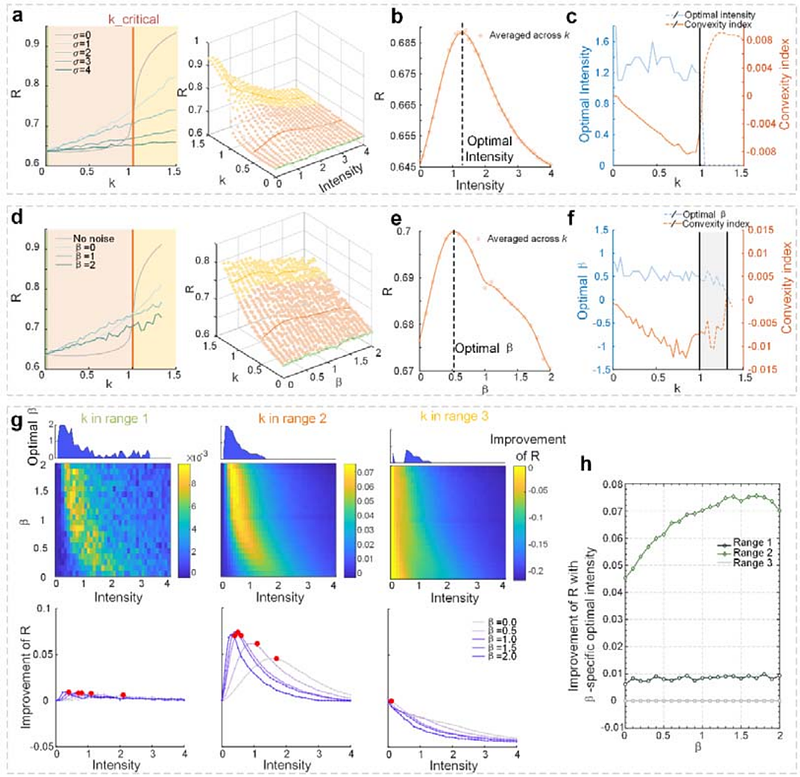Enhancing Neural Synchrony with Endogenous-like 1/f Noise Stimulation

Enhancing Neural Synchrony with Endogenous-like 1/f Noise Stimulation
Ping, A.; Guan, L.; Gu, H.; Jiang, Z.; Deng, W.; Chen, H.; Zeng, K.; Li, X.
AbstractAperiodic components of neural activity, characterized by endogenous 1/f noise dynamics, are hypothesized to support the emergence of large-scale cortical order and cognitive flexibility. Here, we combine computational modeling and human brain stimulation to elucidate the role of 1/f noise in modulating neural synchrony. Using a coupled oscillator model, we demonstrate that ubiquitous 1/f noise does more effectively enhances phase synchrony than spectrally flat (white) noise. Crucially, we identify a competitive synergy between noise intensity and the 1/f spectral exponent: starting from optimal white noise-induced synchrony, increasing the 1/f exponent while decreasing noise intensity leads to a further enhancement of synchrony, which peaks at a specific parameter regime before diminishing. To experimentally validate these findings, we developed a transcranial 1/f noise stimulation (tFNS) system and applied it to human subjects. Compared to spectrally white noise stimulation, the tFNS more robustly enhanced corticospinal synchrony, consistent with model predictions. These results uncover a functional advantage of scale-free brain noise in driving coordinated neural dynamics, offering a new framework for optimizing non-invasive brain stimulation. More broadly, our findings suggest that the brain may harness stochastic facilitation through adaptive modulation of its aperiodic activity to support ordered macro-dynamics.